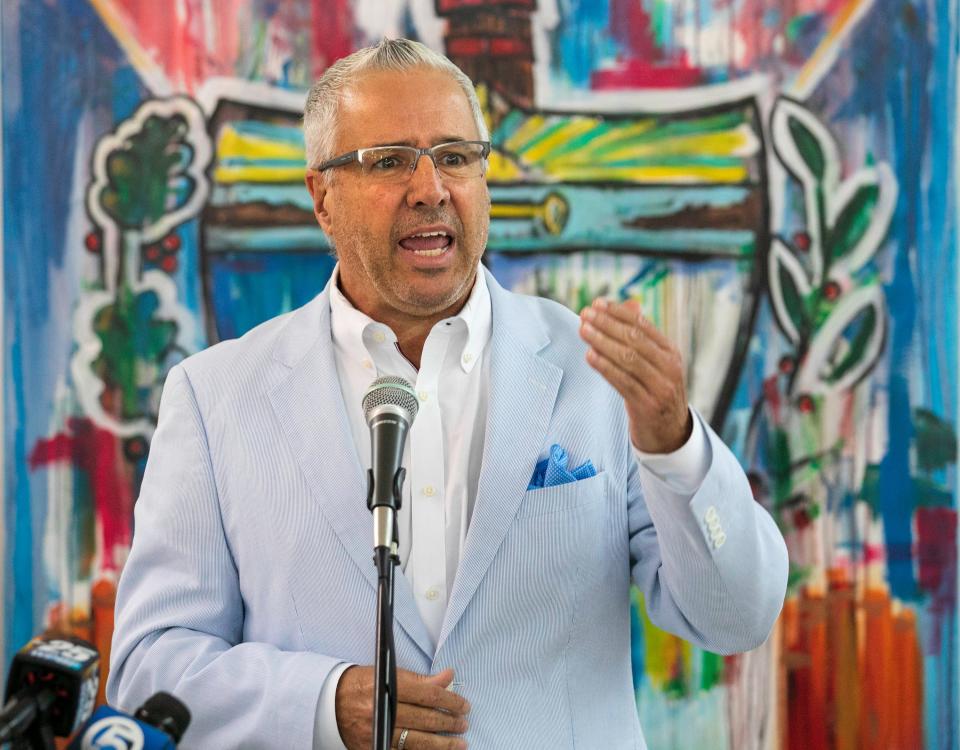Florida historic buildings bolster tourism, quality of life. Why demolish them? | Opinion
Guest columns reflect the views of the writers, not necessarily of the Palm Beach Post Editorial Board.
As when a hurricane shifts course and a direct hit is averted, Florida had a near-miss when the legislative session ended without final passage of the Resiliency and Safe Structures Act. Despite its title, which evokes notions of strength and security, the bill would have gutted many of the historic places that Floridians hold dear.
Among other things, the bill as introduced would have allowed nearly unfettered demolition of thousands of historic buildings along over 1,350 miles of coastline. What’s worse, the bill would have also fast-tracked demolition of historic buildings outside of coastal communities if they were deemed “unsafe,” ignoring the fact that countless historic buildings once deemed unsafe have been spectacularly revived.
Only some historic buildings – such as those individually listed on the National Register of Historic Places and those in a handful of historic communities – were exempt. Virtually every other historic building – including the Art Deco gems on Miami Beach – could be demolished. In indiscriminately exposing these buildings to destruction, the bill’s sponsors ignored the public officials and property owners who opted into designation.
As the chair and past interim chair of the Advisory Council on Historic Preservation, a federal agency, we are glad the bill died. The Act would have diminished the rich history of Florida, the quality of life for its residents, and the attractions that buoy the economy through tourism. Its damage would have been worse than urban renewal, and it could have set a dangerous precedent for other states.
Instead of tearing down our historic places, we need all levels of government to ensure they become more resilient. Our agency has recognized this dire need, developing a new climate policy that will shape intergovernmental strategies protecting the places we all care about.
Florida can learn from legislators’ misstep and set a high bar for other states. The Florida preservation community has long recognized sea level rise as a significant threat, as indicated in the state’s latest historic preservation plan. The Florida Division of Historical Resources has distributed millions of dollars in grants to property owners suffering losses after recent hurricanes, and has provided guidance (albeit two decades’ old) to local governments related to planning, building assessments, debris management, and appropriate repairs post-disaster.
Unfortunately, the state must do more to integrate historic resources into natural disaster planning, mitigation, and response. The state’s 2018 hazard mitigation plan makes scant mention of historic places; that should change. Investments in mapping and data could enable robust analysis of the Florida Preservation Atlas and the Climate and Economic Justice Screening Tool to identify which historic buildings – and which disadvantaged and underserved communities using those buildings – are most at risk.
Moreover, the state could expand its existing design guidance to clarify that interventions such as elevating, dry floodproofing, wet floodproofing, and floodwalls can be effective options for fortifying historic buildings. The state could also develop new guidance for their relocation – which may well be what saves them. Those who have previously frowned on these interventions must recognize that new climate realities require a more flexible response. A menu of allowed treatments or a pattern book with examples as to how to take these steps with minimal damage to historic fabric can help property owners optimize their choices.

Finally, the state might consider investing in research on the technical interventions needed to strengthen buildings battered by saltwater and wind. Given the large number of coastal historic buildings made of concrete, the State could also more definitively embrace recent advances that augment concrete’s longevity and strength, some summarized in a report by the Getty Conservation Institute.
In the face of rising seas, violent storms, and aging building stock, Floridians are eager to continue preserving their historic communities. By considering new approaches and investments, like the ones we recommend in our agency's climate policy and we suggest here, the State’s leaders can help, rather than hinder, equitable and long-term progress toward these goals.

Sara Bronin is the President Biden-appointed Chair of the Advisory Council on Historic Preservation; Rick Gonzalez is a Florida resident and a President Trump-appointed member of the Council, who previously served as its Interim Chair. Both are licensed architects.
This article originally appeared on Palm Beach Post: Florida must toughen its historic buildings to handle climate change

